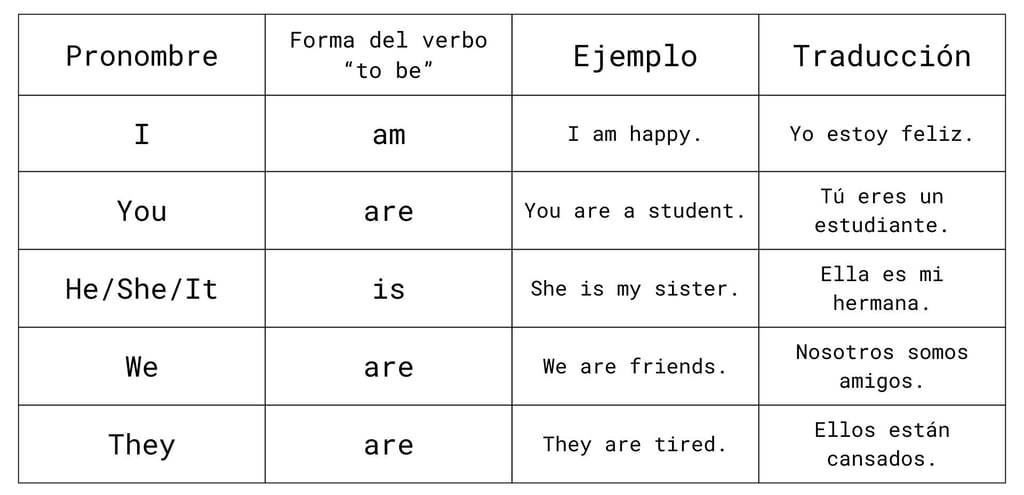The Verb To Be: Learn the Basics!
En esta lección aprenderás a usar el verbo “to be” en inglés. Practicarás los pronombres personales y cómo crear oraciones afirmativas, negativas e interrogativas de manera fácil y divertida.
TEENAGERS
12/17/20241 min read


Affirmative, Negative, and Interrogative Sentences
A) Oraciones Afirmativas
Las oraciones afirmativas siguen esta estructura:
Sujeto + verbo “to be” + complemento.
B) Oraciones Negativas
Para hacer una oración negativa, agregamos “not” después del verbo “to be”:
Sujeto + verbo “to be” + not + complemento.
Forma corta:
I am not → I’m not
You are not → You’re not / You aren’t
He/She/It is not → He’s not / He isn’t
We/You/They are not → We’re not / We aren’t
C) Preguntas (Interrogativas)
Para hacer preguntas, colocamos el verbo “to be” antes del sujeto:
Verbo “to be” + sujeto + complemento + ?
Respuestas cortas:
Yes, I am. / No, I’m not.
Yes, he is. / No, he isn’t.
Yes, they are. / No, they aren’t.
Ejercicios:
1. Completa las oraciones con la forma correcta del verbo “to be”:
a) I ___ a teacher. (am/are)
b) He ___ my brother. (is/are)
c) They ___ happy. (is/are)
2. Escribe las siguientes oraciones en forma negativa:
a) She is a doctor. → ____________________
b) We are friends. → ____________________
3. Transforma las oraciones en preguntas:
a) You are a student. → ____________________
b) They are ready. → ____________________